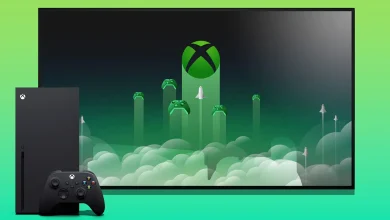Gaming Innovations in Graphics and Gameplay: A Journey Through Technological Evolution
A Journey Through Technological Evolution

Introduction:
Innovations in graphics and gameplay have played a pivotal role in shaping the evolution of gaming, pushing the boundaries of creativity, immersion, and storytelling. From the pixelated sprites of the past to the lifelike worlds of today, this article explores the transformative advancements that have revolutionized gaming experiences and captivated players worldwide.
The Early Days: Pixelated Beginnings
In the early days of gaming, graphical limitations imposed by hardware constraints resulted in simplistic, pixelated graphics. Games like “Pong” and “Space Invaders” relied on basic shapes and minimal color palettes to convey gameplay elements, yet they captivated players with their addictive mechanics and innovative design. As technology advanced, developers experimented with techniques like sprite scaling and parallax scrolling to create more visually engaging experiences, laying the groundwork for future innovations.
The Rise of 2D Sprites and Tile-Based Worlds
The introduction of 2D sprites and tile-based worlds in games like “Super Mario Bros.” and “The Legend of Zelda” marked a significant leap forward in graphical fidelity and gameplay complexity. These games featured colorful, detailed sprites that brought characters and environments to life, allowing players to explore vast, interconnected worlds filled with secrets, challenges, and hidden treasures. The use of tile-based level design enabled developers to create dynamic, interactive environments that could be easily manipulated and customized, enhancing the depth and replayability of games.
The Transition to 3D Graphics
The transition to 3D graphics in the mid-1990s revolutionized gaming, ushering in a new era of immersive, lifelike experiences. Games like “Super Mario 64,” “Tomb Raider,” and “Final Fantasy VII” showcased the power of 3D rendering technology to create expansive worlds, intricate character models, and cinematic cutscenes. The introduction of polygonal graphics, texture mapping, and lighting effects added depth, realism, and visual fidelity to games, blurring the lines between fantasy and reality and captivating players with their immersive storytelling and breathtaking visuals.
The Emergence of Open Worlds and Sandbox Gameplay
Advancements in graphics technology paved the way for the emergence of open-world games and sandbox gameplay experiences that offered unparalleled freedom and exploration. Games like “Grand Theft Auto III,” “The Elder Scrolls: Morrowind,” and “Minecraft” allow players to roam vast, open-ended worlds, interact with dynamic environments, and shape their own destinies through emergent gameplay. The use of procedural generation, dynamic AI, and physics-based interactions enabled developers to create living, breathing worlds that responded to player actions and decisions, providing endless opportunities for creativity, discovery, and player agency.
The Integration of Motion Controls and Virtual Reality
In recent years, gaming has seen a resurgence of innovation with the integration of motion controls and virtual reality (VR) technology. Devices like the Nintendo Wii, PlayStation Move, and Oculus Rift have introduced new ways to interact with games through gestures, body movements, and immersive VR experiences. Games like “Wii Sports,” “Beat Saber,” and “Half-Life: Alyx” have demonstrated the transformative potential of motion controls and VR to enhance immersion, presence, and physicality in gaming, blurring the boundaries between the virtual and the real.
The Future of Gaming: Beyond Graphics and Gameplay
As technology continues to advance, the future of gaming promises even greater innovation and evolution, with advancements in artificial intelligence, machine learning, and cloud computing reshaping the landscape of interactive entertainment. Games like “Cyberpunk 2077,” “Death Stranding,” and “Fortnite” are pushing the boundaries of storytelling, social interaction, and live service gaming, offering players unprecedented levels of immersion, engagement, and community. As we look to the future, the possibilities for gaming are limitless, with new technologies and innovations unlocking new worlds of creativity, expression, and exploration for players around the world.
Conclusion:
Innovations in graphics and gameplay have propelled the gaming industry forward, transforming it from a niche hobby into a global cultural phenomenon. From the humble beginnings of pixelated sprites to the immersive worlds of virtual reality, gaming has continuously evolved to push the boundaries of what is possible in interactive entertainment. As technology continues to advance and new platforms emerge, the future of gaming promises even greater innovation, creativity, and immersion, offering players endless opportunities to explore, create, and experience unforgettable adventures in virtual worlds.
The Transition to 3D Graphics in Gaming: A Revolution in Immersion and Realism
Introduction:
The transition to 3D graphics in gaming marked a monumental shift in the industry, ushering in an era of unprecedented immersion, realism, and artistic expression. This article explores the journey from 2D sprites to fully realized 3D worlds, tracing the technological advancements, creative breakthroughs, and cultural impact of this transformative period in gaming history.
The Limitations of 2D Graphics:
In the early days of gaming, 2D graphics dominated the landscape, with games relying on pixelated sprites and tile-based environments to convey gameplay elements. While these games were innovative and entertaining, the limitations of 2D graphics imposed constraints on developers, restricting the depth, complexity, and visual fidelity of gaming experiences. Players were confined to flat, two-dimensional worlds, with little sense of depth or immersion.
The Birth of 3D Rendering:
The breakthrough in 3D graphics came with the advent of 3D rendering technology, which enabled developers to create lifelike environments, characters, and animations in virtual space. The introduction of polygonal modeling, texture mapping, and lighting effects allowed for the creation of dynamic, interactive worlds that could be explored from multiple perspectives. Games like “Virtua Fighter,” “Doom,” and “Star Fox” showcased the power of 3D graphics to immerse players in fully realized 3D environments, setting the stage for the transition to 3D gaming.
Revolutionizing Game Design:
The transition to 3D graphics revolutionized game design, opening up new possibilities for gameplay mechanics, level design, and storytelling. Games like “Super Mario 64,” “The Legend of Zelda: Ocarina of Time,” and “Final Fantasy VII” pioneered the use of 3D space to create expansive, nonlinear worlds that encouraged exploration, discovery, and player agency. The introduction of dynamic camera systems, physics-based interactions, and cinematic cutscenes added depth, realism, and immersion to gaming experiences, blurring the lines between fantasy and reality.
Pushing the Limits of Technology:
The transition to 3D graphics pushed the limits of technology, challenging developers to innovate and push the boundaries of what was possible in interactive entertainment. Hardware advancements, such as the introduction of dedicated 3D graphics accelerators and more powerful processors, enabled developers to create more complex and detailed environments, characters, and effects. Games like “Half-Life,” “Quake,” and “Metal Gear Solid” showcased the potential of 3D graphics to deliver cinematic storytelling, realistic physics, and lifelike animations, setting new standards for visual fidelity and immersion in gaming.
Cultural Impact and Legacy:
The transition to 3D graphics had a profound cultural impact, shaping the way people play, interact, and perceive gaming as an art form. The rise of 3D gaming coincided with the mainstream popularity of gaming, attracting new audiences and legitimizing video games as a legitimate form of entertainment. Games like “Halo,” “Grand Theft Auto III,” and “The Elder Scrolls: Morrowind” became cultural phenomena, inspiring a new generation of gamers and establishing 3D graphics as the standard for immersive, cinematic gaming experiences.
The Future of 3D Gaming:
As technology continues to advance, the future of 3D gaming promises even greater innovation, creativity, and immersion. Advancements in virtual reality (VR), augmented reality (AR), and cloud gaming are pushing the boundaries of what is possible in interactive entertainment, offering players unprecedented levels of immersion, presence, and interactivity. As we look to the future, the legacy of the transition to 3D graphics continues to inspire creativity, innovation, and exploration, shaping the ever-evolving landscape of gaming for generations to come.
Conclusion:
The transition to 3D graphics in gaming represents a watershed moment in the history of interactive entertainment, revolutionizing the way people play, interact, and experience virtual worlds. From the early experiments of pioneering developers to the fully realized 3D worlds of today, 3D graphics have transformed gaming into a rich, immersive, and dynamic art form that captivates players worldwide. As we celebrate the legacy of 3D gaming, we look forward to the future, where new technologies and innovations promise to unlock new worlds of creativity, expression, and exploration for players around the world.
The Future of Gaming: Beyond Graphics and Gameplay
Introduction:
The future of gaming holds boundless possibilities, driven by advancements in technology, changing consumer preferences, and the ceaseless creativity of developers. While graphics and gameplay have long been central to gaming experiences, the future promises a paradigm shift towards immersive worlds, interconnected communities, and innovative forms of interaction. This article explores the emerging trends and technologies that will shape the future of gaming, transcending traditional notions of graphics and gameplay to redefine the very nature of interactive entertainment.
Virtual Reality and Augmented Reality:
Virtual reality (VR) and augmented reality (AR) represent transformative technologies that promise to revolutionize the way we play and experience games. VR headsets like the Oculus Rift, HTC Vive, and PlayStation VR transport players into fully immersive virtual worlds, where they can interact with environments, objects, and characters in unprecedented ways. AR platforms like Microsoft’s HoloLens and Niantic’s Pokémon GO blend virtual elements with the real world, enabling players to explore, discover, and interact with digital content in physical spaces. As VR and AR technology continues to evolve and become more accessible, the boundaries between the virtual and the real will blur, opening up new opportunities for storytelling, social interaction, and experiential gameplay.
Cloud Gaming and Streaming:
Cloud gaming and streaming services are poised to disrupt the gaming industry, offering players instant access to a vast library of games without the need for expensive hardware or downloads. Platforms like Google Stadia, Microsoft xCloud, and NVIDIA GeForce Now leverage cloud computing technology to stream games directly to players’ devices, eliminating the need for consoles or high-end PCs. Cloud gaming promises to democratize access to gaming, enabling players to enjoy high-quality gaming experiences on a wide range of devices, from smartphones and tablets to smart TVs and streaming media players. As infrastructure improves and internet speeds increase, cloud gaming will become increasingly mainstream, transforming the way games are distributed, accessed, and played.
Social and Community Integration:
The future of gaming will be characterized by deeper integration with social media platforms, online communities, and streaming services, fostering greater connectivity and collaboration among players. Games like Fortnite, Minecraft, and Among Us have already demonstrated the power of social gaming, enabling players to connect, communicate, and collaborate in shared virtual spaces. The rise of live streaming platforms like Twitch and YouTube Gaming has further blurred the lines between player and spectator, creating new opportunities for content creation, community building, and esports. As gaming continues to evolve as a social and cultural phenomenon, developers will increasingly prioritize features that enhance social interaction, collaboration, and community engagement.
Artificial Intelligence and Procedural Generation:
Artificial intelligence (AI) and procedural generation are revolutionizing game development, enabling developers to create dynamic, immersive worlds that evolve and adapt in response to player actions and decisions. AI-powered NPCs (non-player characters) can simulate realistic behaviors, emotions, and interactions, enhancing the believability and immersion of gaming experiences. Procedural generation algorithms can generate vast, procedurally generated worlds, landscapes, and dungeons, offering endless opportunities for exploration, discovery, and emergent gameplay. As AI and procedural generation technology continue to advance, games will become more responsive, unpredictable, and personalized, blurring the lines between scripted content and player-driven narratives.
Accessibility and Inclusivity:
The future of gaming will prioritize accessibility and inclusivity, ensuring that games are playable and enjoyable by people of all ages, abilities, and backgrounds. Developers will increasingly focus on features like customizable controls, adjustable difficulty settings, and inclusive design principles to accommodate diverse player needs and preferences. Game streaming services, localization efforts, and inclusive marketing campaigns will further broaden the appeal of gaming and foster greater representation and diversity in the industry. As gaming becomes more inclusive and accessible, it will continue to serve as a powerful medium for self-expression, empowerment, and connection for players around the world.
Conclusion:
The future of gaming is a dynamic and ever-evolving landscape, shaped by technological innovation, cultural shifts, and the creative vision of developers. Beyond graphics and gameplay, the future promises immersive worlds, interconnected communities, and innovative forms of interaction that transcend traditional notions of gaming. As we embark on this journey into the future, one thing is certain: gaming will continue to inspire, entertain, and connect people from all walks of life, shaping the way we play, learn, and explore the boundless possibilities of interactive entertainment.
Introduction to graphics and gameplay innovations in gaming
As a passionate gamer, I have always marveled at the evolution of graphics and gameplay in the gaming industry. From the early days of pixelated characters to the stunningly realistic visuals we see today, gaming has come a long way. In this article, I will delve into the cutting-edge innovations that have revolutionized graphics and gameplay, creating immersive and unforgettable gaming experiences.
Evolution of graphics in gaming
The journey of graphics in gaming began with simple, 2D visuals that laid the foundation for the industry. As technology advanced, so did the graphics. Colorful sprites gave way to 3D polygons, bringing a new level of depth and realism to games. With the introduction of high-definition displays and powerful graphics cards, developers were able to create visually stunning worlds that captivated players.
Impact of realistic graphics on gameplay
Realistic graphics have had a profound impact on gameplay. The ability to create lifelike characters and environments has made gaming more immersive than ever before. Players can now explore breathtaking landscapes, engage in intense battles, and interact with characters that feel like they belong in the real world. This level of realism not only enhances the overall gaming experience but also allows for more nuanced storytelling and emotional connections with the game world.
Cutting-edge innovations in graphics technology
Advancements in graphics technology have opened up a whole new realm of possibilities for game developers. Real-time ray tracing, for example, allows for incredibly realistic lighting and reflections, adding a level of visual fidelity that was previously unattainable. High dynamic range (HDR) imaging enhances the contrast and color accuracy of games, making them more vibrant and visually stunning. Another groundbreaking innovation is procedural generation, which allows developers to create vast, procedurally generated worlds that feel unique and endless. This technology, combined with advanced physics simulations, enables realistic destruction and deformation of objects within the game world, further enhancing the immersion and gameplay experience.
The role of artificial intelligence in gameplay
Artificial intelligence (AI) has become an integral part of modern gaming, revolutionizing the way games are played. AI-powered NPCs (non-player characters) can now exhibit complex behaviors and adapt to player actions, creating more dynamic and challenging gameplay. Whether it’s enemies that learn from your tactics or teammates that provide intelligent assistance, AI has elevated the level of sophistication in gaming. AI also plays a crucial role in procedural content generation, allowing developers to create dynamic and ever-changing game worlds. From generating quests and missions to creating realistic animal behaviors, AI algorithms are pushing the boundaries of what is possible in gaming.
Virtual reality (VR) and augmented reality (AR) in gaming
Virtual reality and augmented reality have brought gaming to a whole new dimension. With VR headsets, players can immerse themselves in virtual worlds, feeling like they are truly part of the game. The ability to look around and interact with the environment in a natural way adds a sense of presence and realism that is unparalleled. On the other hand, augmented reality merges the real world with digital elements, creating a unique gaming experience. With AR-enabled smartphones or dedicated devices, players can see virtual objects overlaid on top of the real world, blurring the line between fantasy and reality.
The future of gaming: Predictions and possibilities
As technology continues to advance at a rapid pace, the future of gaming holds exciting possibilities. One area that is set to revolutionize gaming is cloud gaming. With the ability to stream games directly to any device, players will no longer be limited by hardware constraints. This opens up new opportunities for developers to create even more visually stunning and immersive experiences. Another exciting development is the integration of machine learning and AI algorithms into game development. This can lead to the creation of games that adapt to players’ preferences and behavior, providing a truly personalized gaming experience.
Popular games that showcase cutting-edge graphics and gameplay
Several popular games have pushed the boundaries of graphics and gameplay, showcasing the cutting-edge innovations in the industry. “The Last of Us Part II” is a prime example, with its stunning visuals and realistic character animations. The game’s attention to detail and emotional storytelling make it a truly immersive experience.
“Red Dead Redemption 2” is another game that captivates players with its breathtaking landscapes and lifelike environments. The game’s open-world design and dynamic weather systems create a sense of realism rarely seen in gaming.
The challenges and limitations of implementing innovative graphics and gameplay
While the advancements in graphics and gameplay have transformed the gaming industry, they also come with their own set of challenges and limitations. Developing games with cutting-edge graphics requires significant resources, both in terms of hardware and talent. It can be a costly endeavor for smaller studios, limiting their ability to compete in the market. Additionally, creating realistic graphics and gameplay mechanics often requires a trade-off with performance. Striking the right balance between visual fidelity and smooth gameplay can be a challenge, especially on less powerful hardware.
Conclusion:
The future of gaming and its impact on the industry
In conclusion, the innovations in graphics and gameplay have revolutionized the gaming industry, creating immersive and lifelike experiences for players. From realistic visuals and dynamic environments to AI-powered NPCs and virtual reality, gaming has come a long way. As technology continues to advance, the future of gaming holds even more exciting possibilities. With cloud gaming, machine learning, and AI algorithms, the boundaries of what is possible in gaming will be pushed further. The industry will continue to evolve, bringing us even more immersive and unforgettable gaming experiences.So, grab your controller, put on your VR headset, and get ready to be transported to new worlds. The future of gaming is here, and it’s revolutionizing the way we play.
CTA:
Join the gaming revolution and experience cutting-edge graphics and gameplay for yourself. Explore the latest games and technologies that are shaping the future of gaming.











